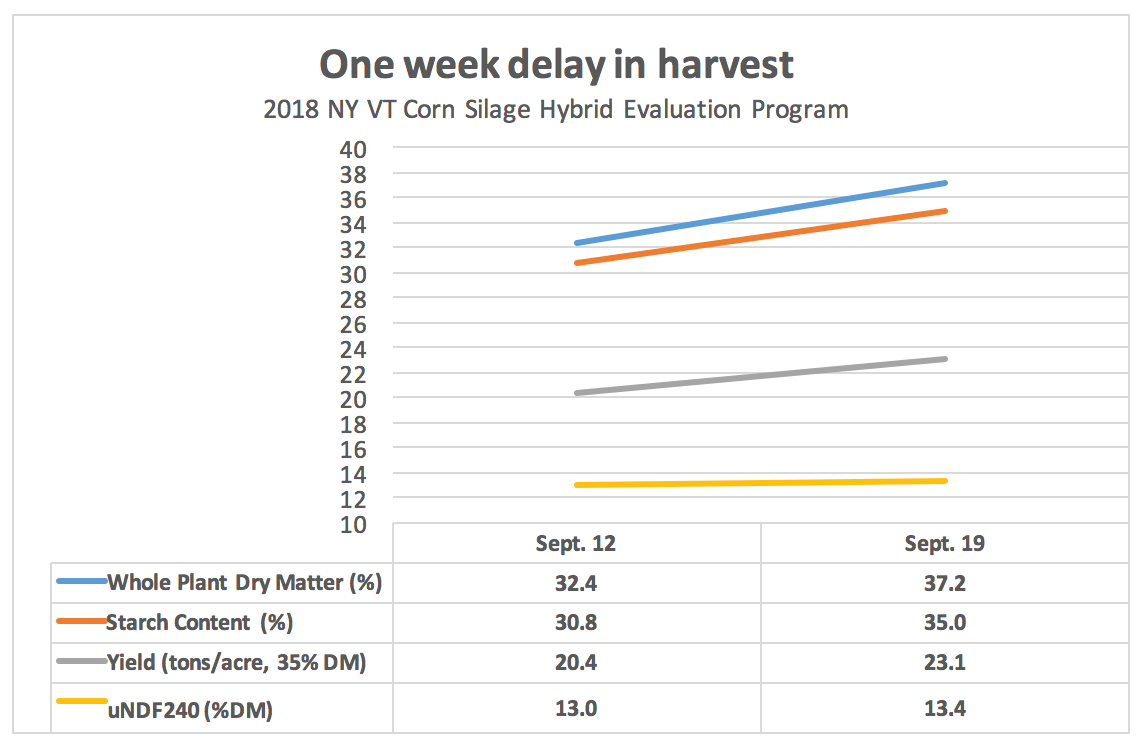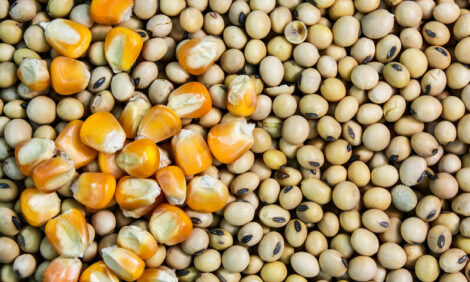



2019 Corn Silage Harvest: An exercise in patience
I want to start with two statements, or more accurately, titles of past articles that have stuck in my head over the years and serve as good reminder as we intently monitor this year’s corn crop and weather conditions, writes Joe Lawrence, Cornell University PRO-DAIRY Forage Systems Specialist.We will chop no corn before it is ready, Ev Thomas
Corn silage harvest is imminent, Ron Kuck

Both basically make the argument that harvest will happen. It does every year and there is no reason to rush it.
A counter to that argument may be that there is a temptation to rush due to fears of a rainy stretch causing muddy field conditions, an unexpected frost, or other challenges associated with waiting, and those concerns carry weight for many operations. It’s not fun to harvest in the mud.
The best we can do is consider those concerns in contrast to the benefits of waiting for the crop to mature.
In terms of making the argument for waiting, the list of reasons is pretty well known:
- Increase starch
- Increase dry matter (DM) yield
- Better fermentation & feed stability
- Reduced leachate issues
A commonly referenced correlation between whole plant DM and starch content is the gain of approximately one point of starch for each one unit increase in DM.
In 2018 at our Vermont location of the Corn Silage Hybrid Evaluation Program the same four hybrids were planted on the same date and then harvested one week apart (each hybrid was replicated three times at each harvest date in this data). The results are shown below.

Given the benefits in waiting, a productive conversation to have can revolve around what can be done to address the risk related to weather and other factors, while holding off on harvest as long as needed.
This includes another list of common topics that take on a new level of importance as the month of September winds down.
- Consider soil drainage and identify fields at the highest risk for mud
- Match these considerations with the stage of the crop (see comments on assessing harvest timing below)
- Determine minimum tonnage needed for feeding lactating animals and try to match that to acres that are the least risky to wait on
- Prepare separate storage areas to keep these feeds separate for better utilization at feedout. See August e-leader.
- Work to open up fields now to streamline the remaining harvest once the corn is at the proper stage for harvest
- Store this feed in a separate area
Executing these strategies may require jumping around to different areas of the farm and, yes, that can add a bit of inefficiency to harvest but it will all seem worth it when you begin to feed out this year’s crop.
Assessing fields for harvest timing
In recent meetings one point of the discussion has been how we cannot use some of the “rules of thumb” for this year’s corn crop, i.e. it doesn’t fit into what we consider normal. This likely does not come as a surprise given the year as a whole but is worth some discussion specific to two common indicators for corn silage harvest.
Timing from silking to silage harvest
The concept of using growing degree days (GDD’s), either from planting or from silking, to track the progress of a corn crop and predict silage harvest timing has long been promoted, over the use of calendar days, and was referenced in Fall corn silage harvest resources. The old rule of thumb was 45 calendar days and this served as rough estimate in a “normal” year and generally assumed the crop was silking in July when GDD accumulation was abundant. This year much of the crop did not silk until August and needed much of the month of September (and October) to mature, a time when we receive significantly less GDD’s per calendar day than we do in July and early August. It can take two weeks in late September to receive the same number of GDD’s as one week on July.
Assessing plant maturity and dry matter
Another rule of thumb that the industry has been trying to move away from for years is the use of kernel milkline as an indicator of silage harvest. This is another highly variable indicator and is considered far less reliable than measuring whole plant dry matter (DM).
Over the last week, personal observations and reports from others regarding whole plant DM measurements show that in many fields this year the kernels seems to be drying down faster than the rest of the plant. Read more in a SCNY CCE team article Setting up corn silage harvest. Therefore the crop could be much wetter than the kernel milkline would suggest, making testing of whole plant DM even more critical.
Headline photo courtesy of The Ohio State University.TheCattleSite News Desk


